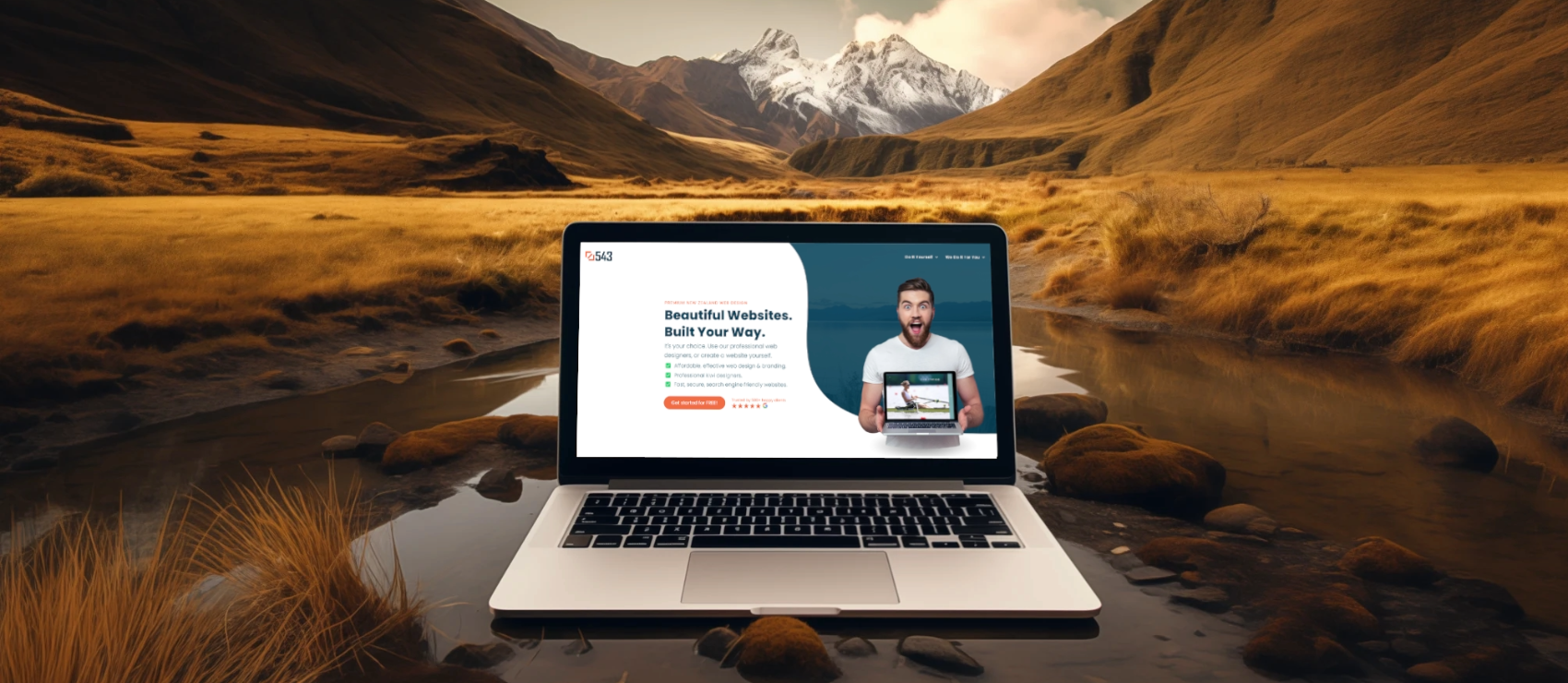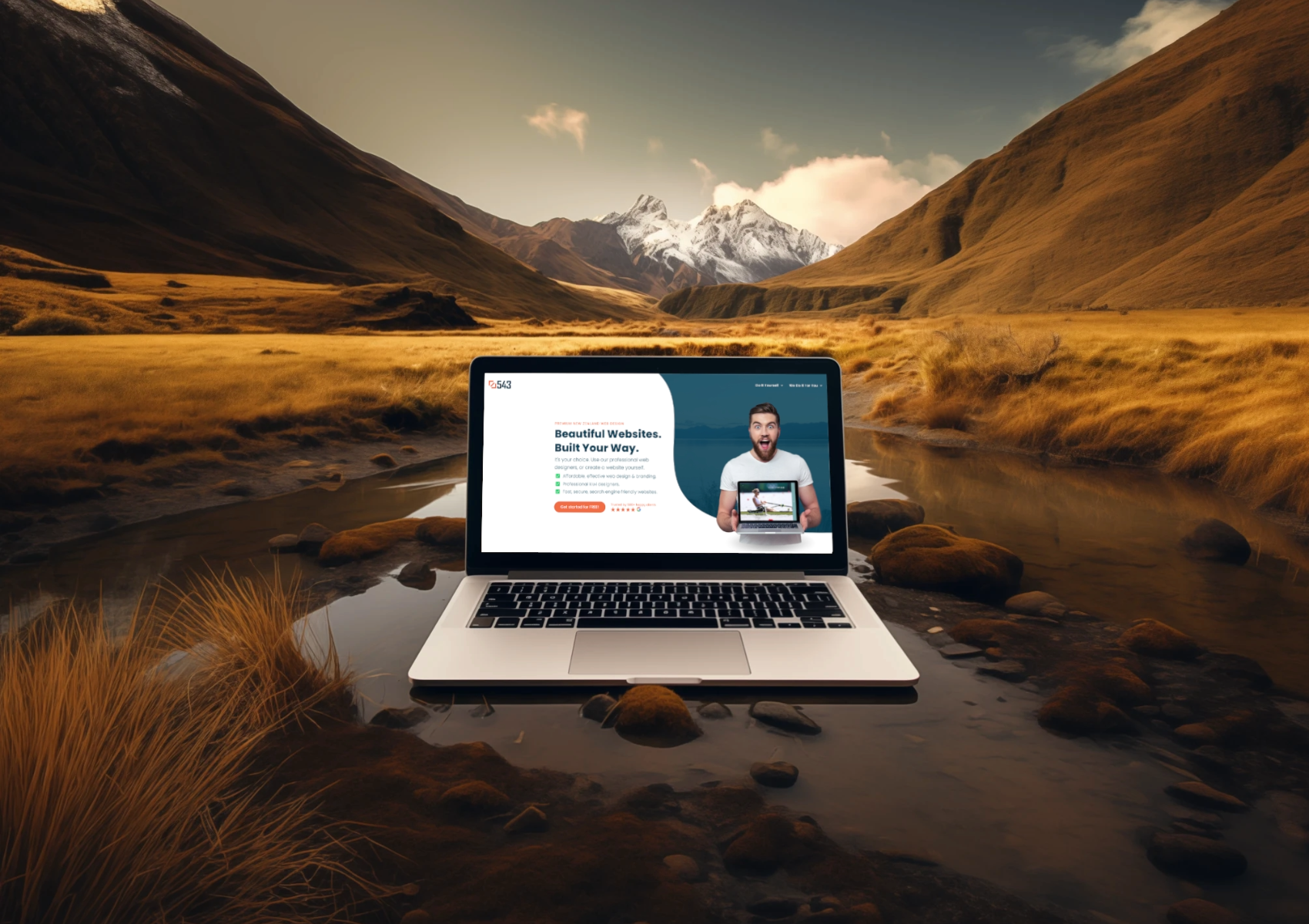543's Online Experts Give Their Top Tips for Good Web Design

1: Keep Your User Experience Simple
Simplicity is the key to a great user experience. A clean, clutter-free design makes it easy for users to find what they're looking for. This means using clear headings, readable fonts, and intuitive navigation. The simpler your website, the better the user experience. The accessibility of your website is becoming increasingly important. You should always try to make sure your chosen colours have a high contrast and think about how someone with poor eyesight or dyslexia might view your page. If in doubt, grab a plugin that will help convert those pages to be more legible for those users. A few easy things to implement are:
- Adding alt tags in images in case people need to have a site read out to them
- Go for a conventional navigation structure - it's what people are used to
- Make it super easy for a customer to contact you
2: The Customer Should Always Come First
Your website should be designed with your audience in mind. That means taking a step back from your business to think about it from your customer's perspective. Think about what they want to find on your site as well as what you want them to find. Create your content to answer their burning questions and if necessary research your audience and test your design with real users to ensure it meets their expectations. Good user experience (UX) design will always put the customer first. A website should be easy to use and as a general rule you should:
- Ask yourself if the customer can figure out who you are, what you do and how to contact you as soon as they land on your website.
- Forget the fancy animations that take forever. It's better to have a quick-loading page than a ton of visual elements animated on your page.
- Do some keyword research to see if clients are searching for the terms you actually think they are.
3: What's Good for Your Client is Good for SEO
A website that's easy to use and provides valuable content will naturally rank higher in search engines. SEO isn't just about keywords; it's about creating a user-friendly experience that keeps people coming back. As a rule of thumb, if you are optimizing your website content to better cater for your ideal customer, it's highly likely you'll be improving it for the search queries that are relevant for that customer as well. Admittedly, some technical and SEO page elements play a role in web design, but your content is a great place to start. Your customers and Google will both love a fast, responsive and well-written website that looks good! Some key things to remember are:
- Keep the site fast. Make sure you don't have huge image files that slow it down.
- Use good articles, blogs and FAQs to answer questions for your customers.
- Make sure the meta-data (including the schema) is all up to date and relevant
4: Colour is Your Friend
Colour can be a powerful tool in web design. It can set the mood, draw attention, and guide users through your site. Use colour strategically to highlight important elements, create balance, and reflect your brand's identity. Don't be afraid to pair a bright colour with a darker, more neutral colour. The huge benefit to this is that you can make buttons and calls to action really stand out on the page. Colours like orange, red and pink all draw a user's eye very quickly, meaning they are more likely to lead to a click.
- Be careful using bright colours in text - it can become unreadable. It's better to keep those bright colours for things like buttons or arrows to draw attention throughout your site.
- Create a visually appealing website by using colour-matching tools. Try something like Canva's colour wheel to find colours that complement each other.
- Don't be afraid of using white space. Using a large amount of white can make a pleasing website design and can draw attention to the important points you want to highlight.
5: Use Pictures, But Use Them Sensibly
Images can make or break your website's design. High-quality, relevant images can enhance user engagement, but too many images or poor-quality ones can detract from your message. Use images thoughtfully and always optimize them for the web. A lot of your key design decisions will be based on images and how they can make your website stand out. Unfortunately, images and videos mean extra loading time for your site, so you need to be very thoughtful about how you use them throughout the website. Make sure you reduce them to a width and file size that is appropriate.
- Find an online tool to compress your images. You don't want them to lose too much quality, but as a general rule, they should be less than 1MB and no wider than 2000px when used on your site.
- Taking it a step further consider using a website platform that automatically resizes your images for you. As an example, 543's DIY editor will automatically resize your image to fit your desktop, tablet and mobile website.
6: One Click Navigation to Conversion
The fewer clicks a user needs to take to convert, the better. Design your website so that the most important actions are easy to find and complete. This might mean placing your call-to-action buttons prominently or streamlining your checkout process. This is one of the fundamental principles that we try to follow at our website design agency. We also like to try to have the user get to where they need to go anywhere on the site within a couple of clicks. You'll be able to achieve this with a well thought out navigation structure, as well as a good knowledge of how your users will interact with your website.
- Make sure that no matter where your customer is on the site they have a call to action button close at hand.
- Think about testing how website visitors are actually interacting with the page using a tool like Hotjar.
- Do a bit of planning before diving into the design and development of your site. Great design will come from knowing what your website needs before you get stuck in.
7: Your Logo Isn't What Sells Your Products and Services
While a logo is a crucial part of your brand identity, it's not what convinces users to buy. Focus on creating valuable content, showcasing your products effectively, and building trust with your audience. Your logo supports your brand, but your content and products are what truly matter. One of the biggest mistakes we see in site design is people making their logo HUGE. Typically, that means the logo takes up a big chunk of space at the top of the first loading screen 'above the fold' - meaning all the valuable content is pushed down the page. A well-designed website will usually have a very small logo, and the rest of that top header area is devoted to sales messaging and calls to action. Your customer is very unlikely to choose you because of your cool logo, however, they will make their choice on the messaging they read on the website.
Check out a range of well-known companies with big ad budgets and you'll see that their logos are very small on the site. They know the logo isn't the most important thing in their homepage design.
Try to have your client sold on your business on the first load of your page. It's well understood that most users don't scroll very far down your page, so the lower the messaging on your site, the less likely it will be that people read it.
How Do I Create a Website Following These Principles of Good Website Design?
Find a Template That Suits
There is no need to reinvent the wheel if you want to build a website yourself. Look at finding a website platform that allows you to easily edit and modify an existing template. Go for one that you think has the general layout you really like, then tweak the colour scheme, images and text content to suit your project. Starting with a well-designed template can make the entire responsive design process easier, giving you a solid starting point for both the desktop and mobile versions of your site. From there, just tick off the list above with every new design element on the page. Think about the usability of the site as well as the visual design and you'll be heading in the right direction.
Talk to a Pro About Your Website Design Requirements
If you'd like to get a professional web design company to build your site, think about having a conversation with them about their approach to some of these design trends and principles. A talented web designer can provide personalized advice and help you create a website that not only gets the look and feel that you want, but also hits some of these best practices. When they present you with an initial design concept, just keep some of the above web design principles in the back of your mind as you are evaluating it. They'll no doubt ask for your input, particularly with content creation, and that's the perfect time to bring what you've learned here into your website. If you're after a great New Zealand website designer to help out with your next website, then definitely don't hesitate to get in touch with 543 for a free, no-obligation quote.



